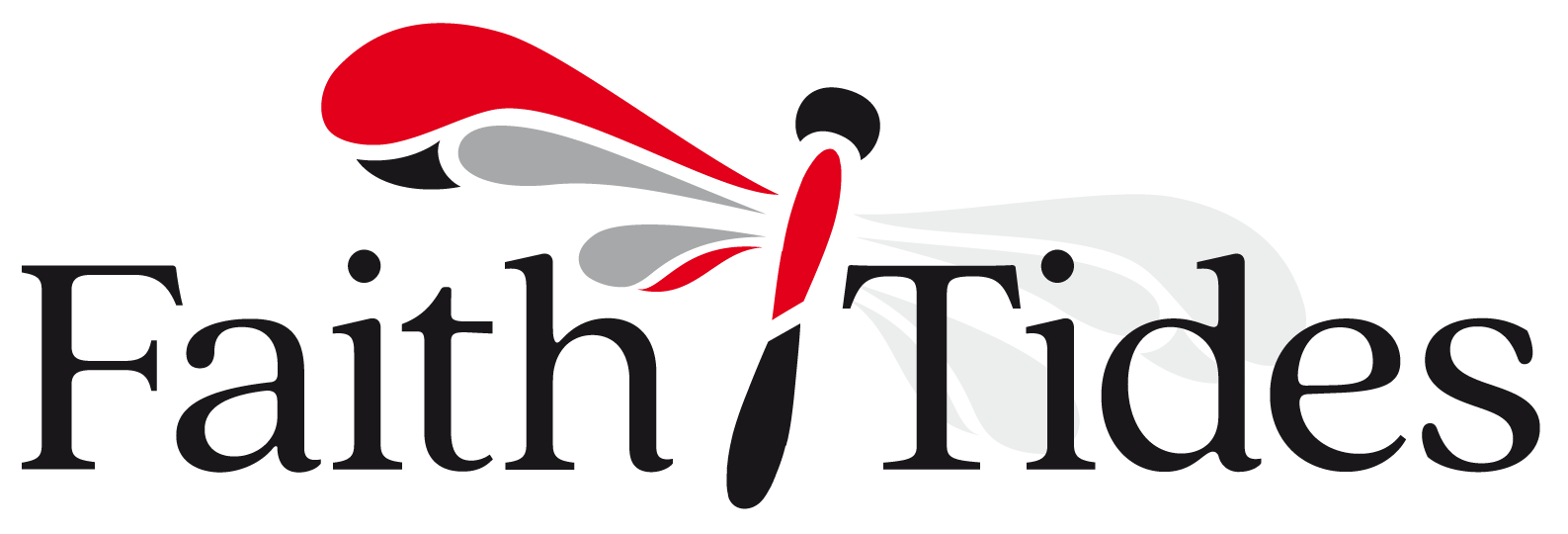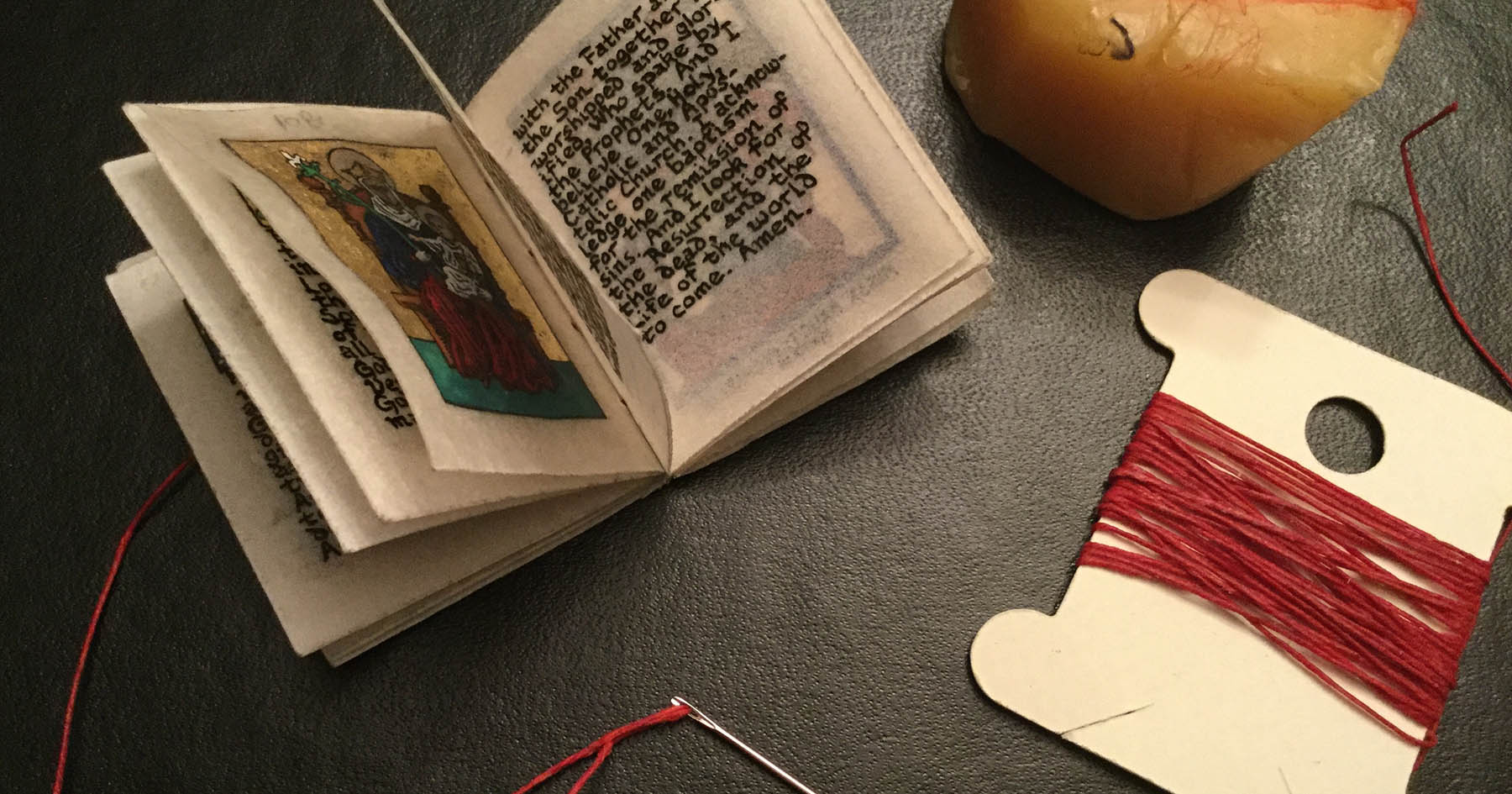As an admirer of ecclesiastical art and a crafter of handmade books, I combined my two interests to create a miniature illuminated prayer book. A good friend of mine was being confirmed on Michaelmas, and I, as his sponsor, thought this would make an ideal gift for his special day.
To make the pages of the book, vellum was chosen. Vellum — or parchment as it is also called — is the skin of a calf (or goat, sheep, deer, etc.) specially prepared for writing upon. It has a luxurious look and feel, and is an excellent surface for scribing.
After the pages were measured and cut out, the individual sheets were lined with a soft pencil for the setting down of the text, in this case a selection of prayers. If an illustration or “historiated letter” (a big gold letter starting off a text) was needed, a space was blocked out for it. The words were then transcribed in ink with a mapping pen with a very fine nib, and the images drawn in pencil to be illuminated.
To embellish the illuminations, genuine gold leaf was used. This is fine gold (usually 22 karats or higher) pressed into tissue thin sheets. Each sheet — or “leaf” — is extremely fragile. If mishandled, it can easily crumble to nothing with just a touch. To heighten the effect of the gold leaf, the centuries old practice of laying it on a raised surface of gesso was followed. There are many recipes for making gesso, some dangerous as they require the addition of poisonous white lead, but substitutes can be found using safer ingredients. Whatever the recipe, gesso is important. If the gold leaf was simply put flat on the vellum, it would not be as brilliant. However, if it were placed upon a bed of gesso, its shimmer would be intensified with the light reflecting upon the raised area.
So how is the gold leaf applied? Firstly, what needs to be gilded (for example, a historiated letter) must be painted in with gesso. Several layers are needed to build up the form, and when dried, it is smoothed over to give it a domed curve on top. When all is ready, the gesso is slightly moistened with puffs of breath. This allows the gold to adhere better. A piece of leaf, cut slightly larger than the area to be covered, is then carefully laid over the hardened gesso and rubbed down. The gold will stick to the gesso. The excess is brushed away. To heighten its brilliance, the gold is then gone over with a burnisher, usually tipped with a highly polished stone, such as an agate. If done correctly, the beautiful end result is virtually everlasting. Many ancient manuscripts still have gilding that looks as fresh as the day it was applied.
When all the gold work was completed, the images were illuminated. Inks, watercolours and gouaches were used, including “shell gold” and “shell silver.” These are solid pigments made of very fine genuine gold and silver powders combined with binders of Gum Arabic. When water is added to them, they make gleaming metallic paints. The terms “shell gold” and “shell silver” by the way, refers to the medieval practice of using mussel shells to store and to mix theses precious pigments.
After all the illuminations were done, the pages were sewn together and bound in book form. The cover was embellished with metal corners set with tiny Balas rubies (spinels). Lastly, a slipcase, wrapped in marbled paper and bearing a crucifix, was made to carefully house the book.
The completed size of the prayer book is about 1 ¾” x 2 ¼”. So yes, “good things do come in small packages” as the saying goes!
























